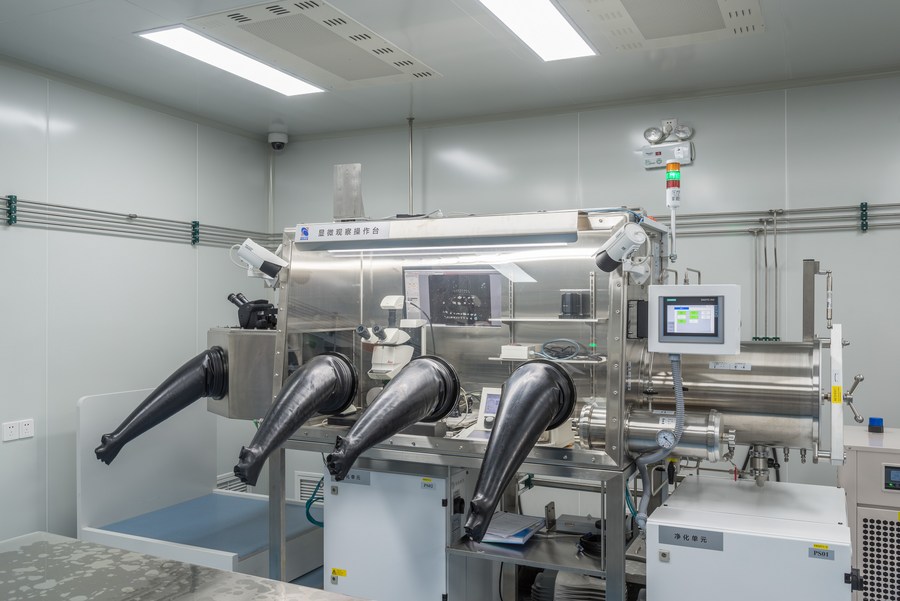
Photo taken on Nov. 30, 2020 shows the operation area for microscopic examination in a laboratory for moon samples at the National Astronomical Observatories of the Chinese Academy of Sciences in Beijing, capital of China. (National Astronomical Observatories, CAS/Handout via Xinhua)
BEIJING, Dec. 19 (Xinhua) -- The moon samples collected by China's Chang'e-5 probe will be unsealed at the laboratory for moon samples at the National Astronomical Observatories of the Chinese Academy of Sciences in Beijing.
The Chang'e-5 probe, comprising an orbiter, a lander, an ascender and a returner, has brought back China's first samples collected from the moon. It is one of the most complicated and challenging missions in the country's aerospace history. Here is a timeline of the mission:
Chang'e-5 probe was launched by a Long March-5 rocket from the Wenchang Spacecraft Launch Site on the coast of southern island province of Hainan on Nov. 24.
After two orbital corrections, Chang'e-5 probe decelerated and entered the lunar orbit on Nov. 28.
After the lander-ascender combination separated from the orbiter-returner combination, the lander-ascender combination of Chang'e-5 successfully landed on the near side of the moon and started sampling on Dec. 1.
Within two days, the probe drilled into ground and grabbed samples at different sites on the surface of the moon. China's national flag was unfurled from the Chang'e-5 probe on the moon.
The ascender of Chang'e-5 took off from the lunar surface and entered the preset lunar orbit on Dec.3.
The ascender of Chang'e-5 probe successfully rendezvoused and docked with the orbiter-returner combination in lunar orbit, and transferred the samples to the returner on Dec. 6.
After conducting orbital maneuver twice, the orbiter-returner entered the moon-Earth transfer orbit on Dec. 13. It completed two orbital correction en route to Earth.
The returner of Chang'e-5 probe separated from the orbiter and returned to Earth on Dec. 17. It landed in Siziwang Banner, north China's Inner Mongolia Autonomous Region.
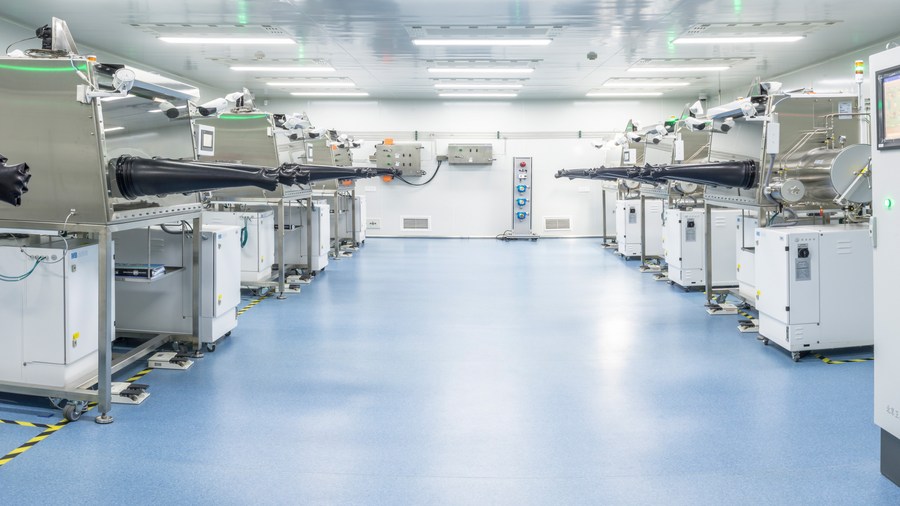
Photo taken on April 22, 2020 shows the laboratory for moon samples at the National Astronomical Observatories of the Chinese Academy of Sciences in Beijing, capital of China. (National Astronomical Observatories, CAS/Handout via Xinhua)
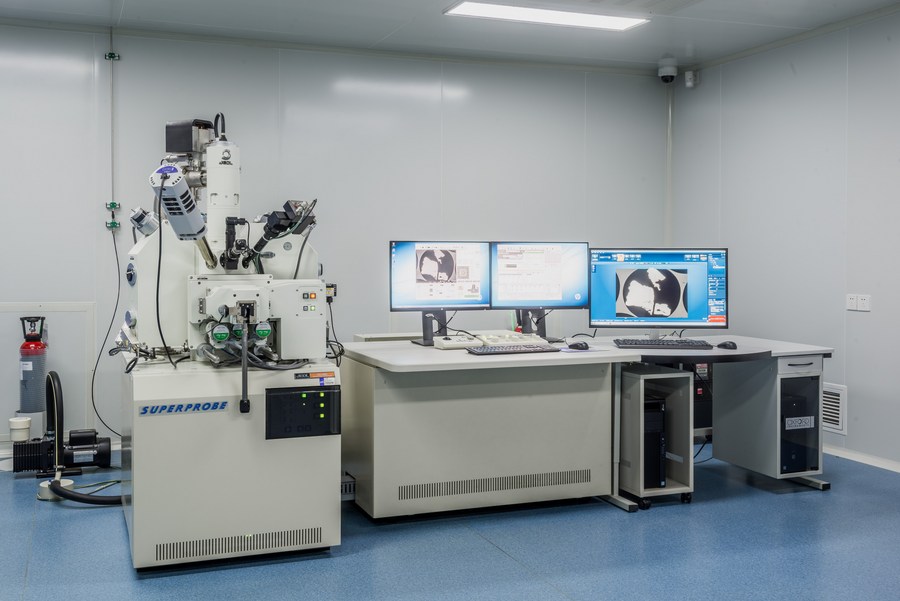
Photo taken on Nov. 27, 2020 shows the scanning electron microscope in a laboratory for moon samples at the National Astronomical Observatories of the Chinese Academy of Sciences in Beijing, capital of China. (National Astronomical Observatories, CAS/Handout via Xinhua)
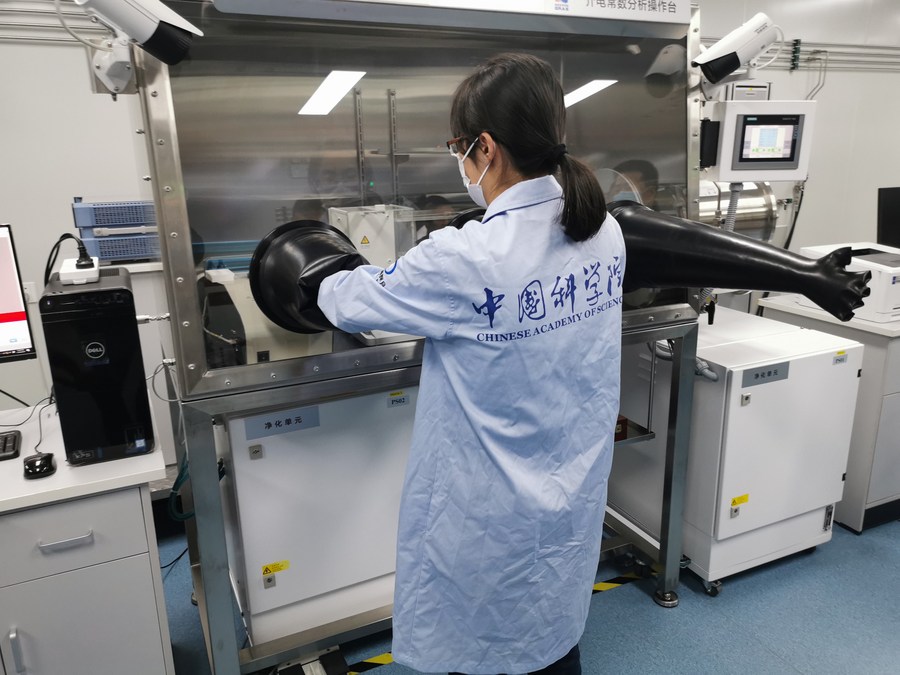
Photo taken on Nov. 30, 2020 shows a staff member adjusting an experimental installation in a laboratory for moon samples at the National Astronomical Observatories of the Chinese Academy of Sciences in Beijing, capital of China. (Image Society of Science and Technology, CAS/Handout via Xinhua)
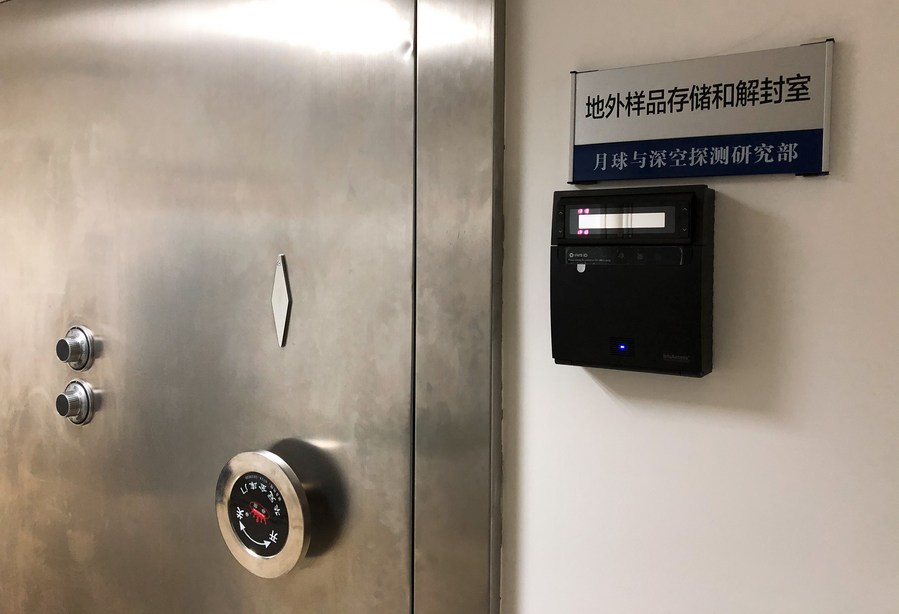
Photo taken on Nov. 30, 2020 shows the exterior of the storage and unsealing room in a laboratory for moon samples at the National Astronomical Observatories of the Chinese Academy of Sciences in Beijing, capital of China. (Image Society of Science and Technology, CAS/Handout via Xinhua)

Photo taken on Nov. 30, 2020 shows the exterior of the storage and unsealing room in a laboratory for moon samples at the National Astronomical Observatories of the Chinese Academy of Sciences in Beijing, capital of China. (Image Society of Science and Technology, CAS/Handout via Xinhua)
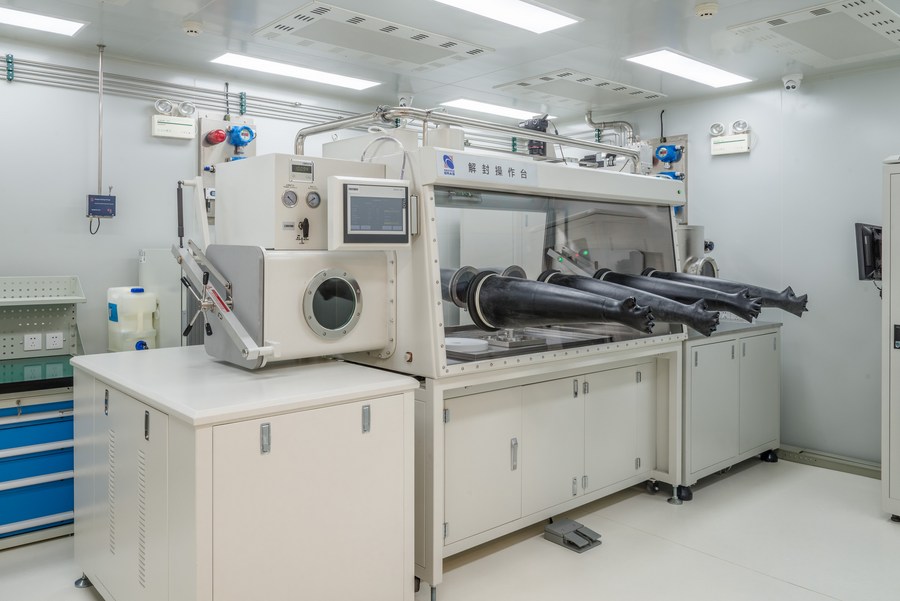
Photo taken on Nov. 27, 2020 shows the operation area in a laboratory for moon samples at the National Astronomical Observatories of the Chinese Academy of Sciences in Beijing, capital of China. (National Astronomical Observatories, CAS/Handout via Xinhua)
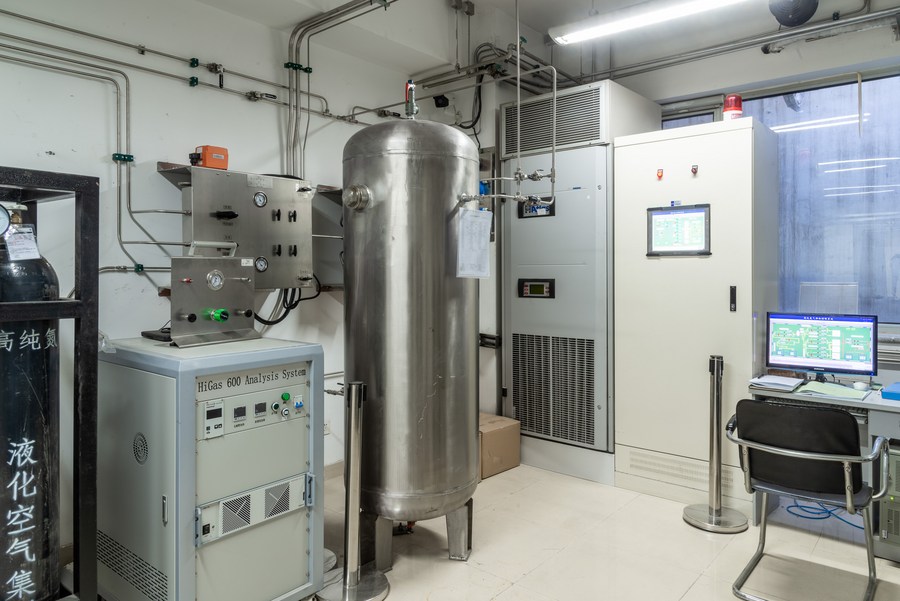
Photo taken on Dec. 4, 2020 shows the high purity nitrogen supply system in a laboratory for moon samples at the National Astronomical Observatories of the Chinese Academy of Sciences in Beijing, capital of China. (National Astronomical Observatories, CAS/Handout via Xinhua)
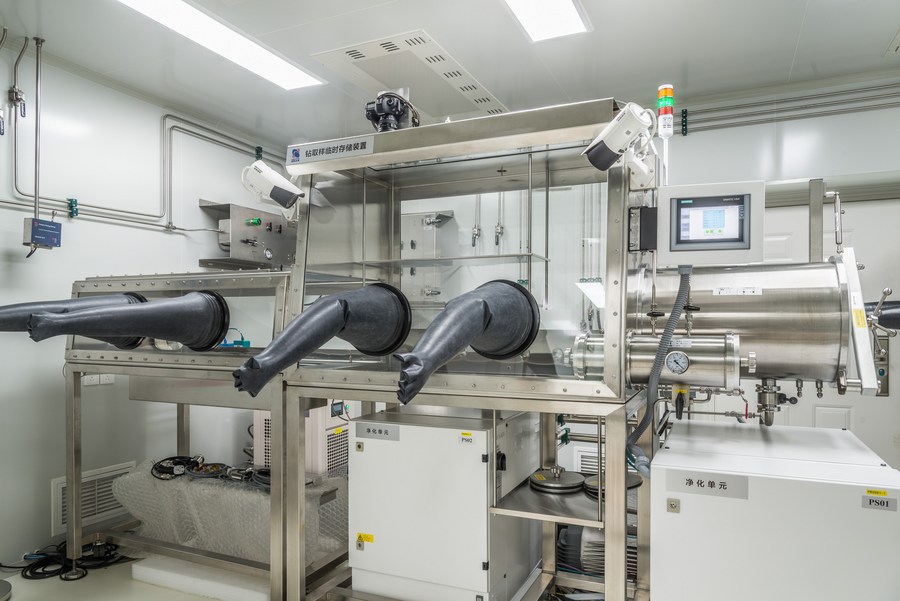
Photo taken on Nov. 27, 2020 shows the temporary storage device for subsurface samples collected by drilling underground in a laboratory for moon samples at the National Astronomical Observatories of the Chinese Academy of Sciences in Beijing, capital of China. (National Astronomical Observatories, CAS/Handout via Xinhua)
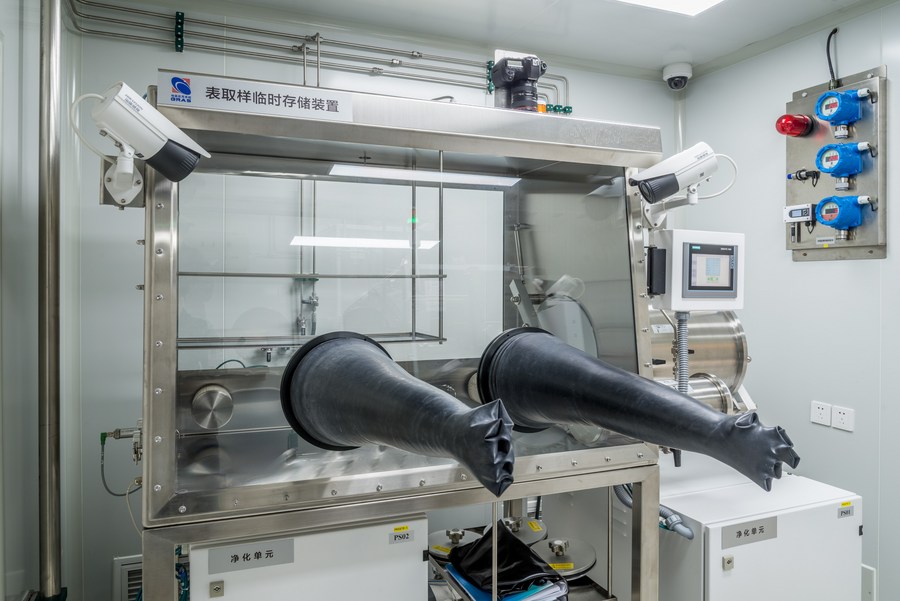
Photo taken on Nov. 27, 2020 shows the temporary storage device for samples grabbed on the moon surface in a laboratory for moon samples at the National Astronomical Observatories of the Chinese Academy of Sciences in Beijing, capital of China. (National Astronomical Observatories, CAS/Handout via Xinhua)■



